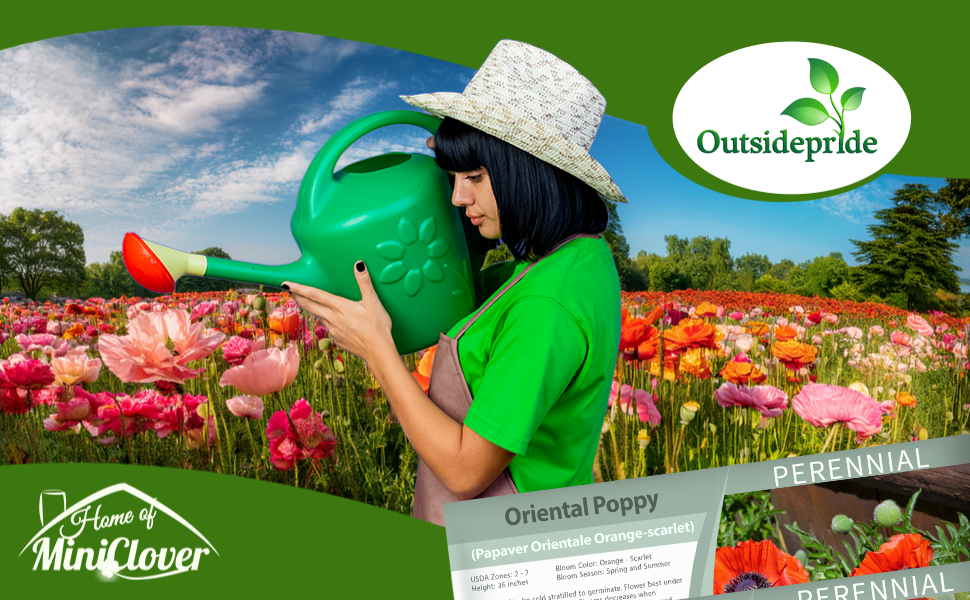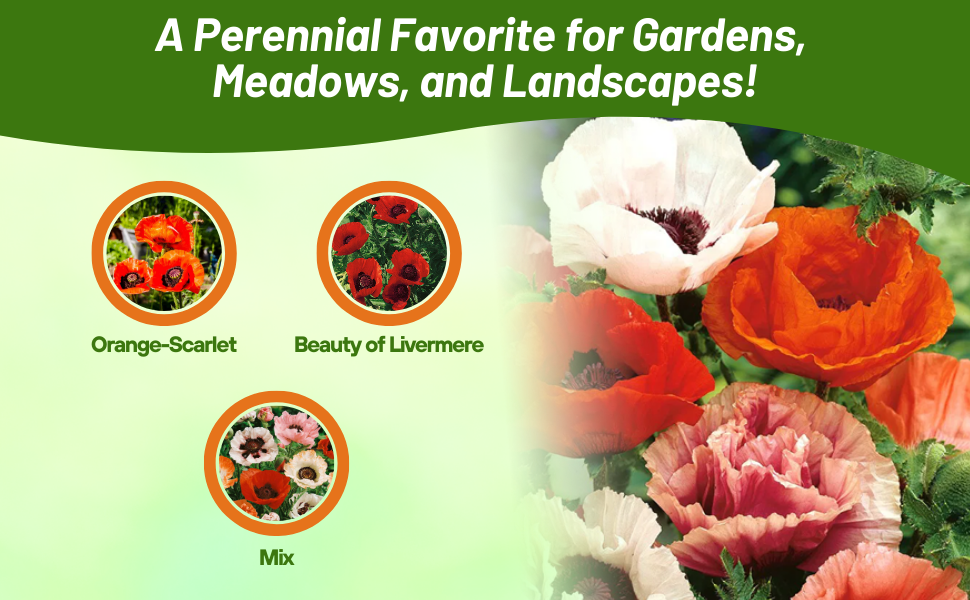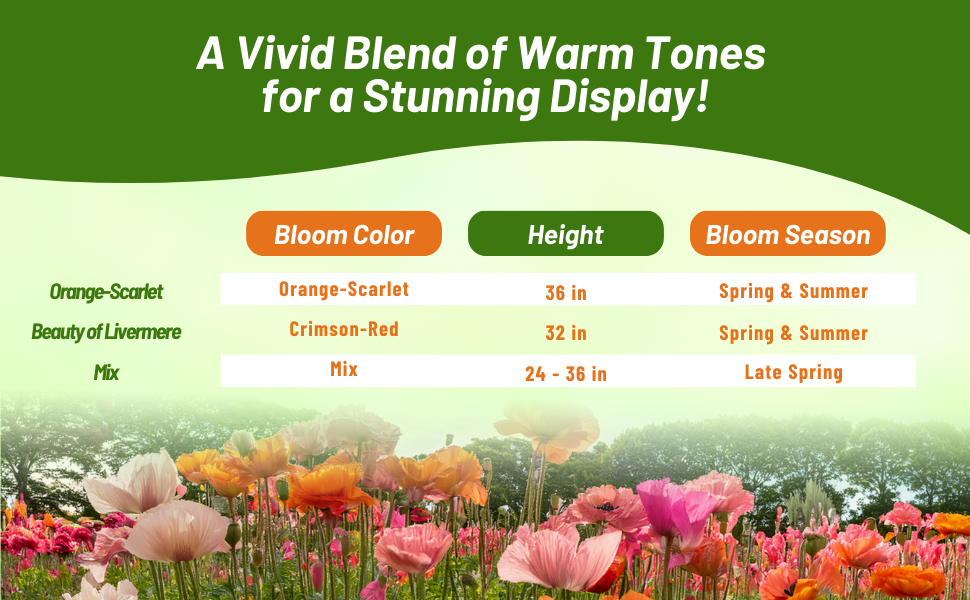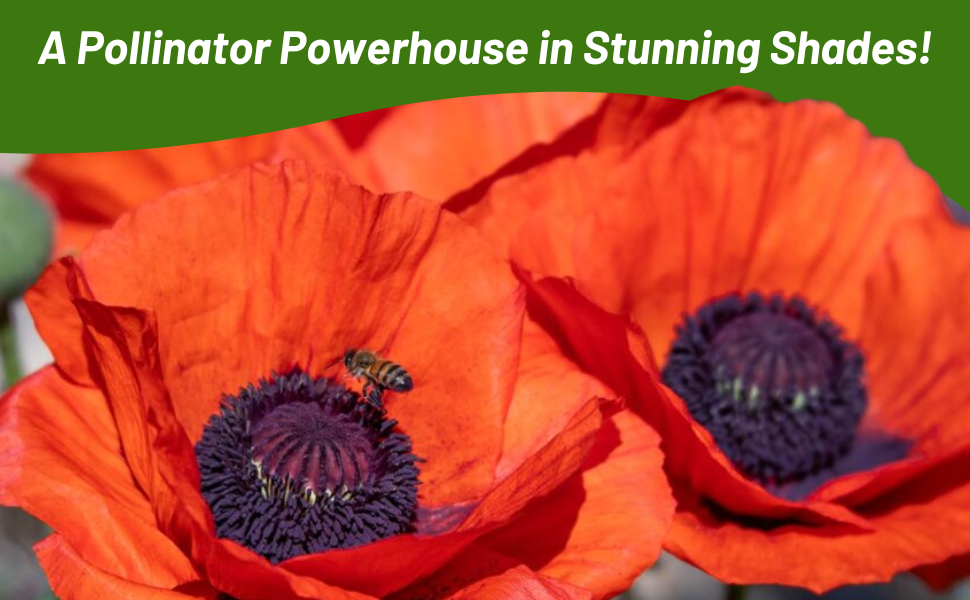-
CATEGORY ::
- All Seeds /
- All Flower Seeds /
- All Poppy Seeds





Poppy Seeds - Orientale Beauty of Livermere
SEASON
Perennial
USDA ZONES
2 - 7
HEIGHT
32 inches
BLOOM SEASON
Spring and summer
BLOOM COLOR
Crimson-red
ENVIRONMENT
Full sun
SOIL TYPE
Well-drained, pH 5.8 - 6.8
DEER RESISTANT
Yes
SEEDS PER POUND
3,400,000
SEASON
Annual
USDA ZONES
3 - 9
HEIGHT
12 - 15 inches
BLOOM SEASON
Summer
BLOOM COLOR
Red
ENVIRONMENT
Full sun
SOIL TYPE
Loose, well-drained, pH 6.1 - 7.3
DEER RESISTANT
Yes
SEASON
Perennial
USDA ZONES
4 - 9
HEIGHT
24 - 36 inches
BLOOM SEASON
Late spring through early summer
BLOOM COLOR
Black and white
ENVIRONMENT
Full sun
SOIL TYPE
Well drained soil, pH 5.5 - 7.5
DEER RESISTANT
Yes
SEASON
Perennial
USDA ZONES
3 - 8
HEIGHT
12 inches
BLOOM SEASON
Mid spring to early summer
BLOOM COLOR
Orange
ENVIRONMENT
Full sun
SOIL TYPE
Loose, well-drained, pH 6.1 - 7.3
DEER RESISTANT
Yes
SEASON
Annual
USDA ZONES
3 - 10
HEIGHT
10 - 12 inches
BLOOM SEASON
Mid spring to late summer
BLOOM COLOR
Mix
ENVIRONMENT
Full sun
SOIL TYPE
Prefers gritty, fast-draining conditions, pH 6.6 - 7.5
DEER RESISTANT
Yes
SEASON
Annual
USDA ZONES
3 - 10
HEIGHT
12 inches
BLOOM SEASON
Mid spring to late summer
BLOOM COLOR
Pink
ENVIRONMENT
Full sun
SOIL TYPE
Prefers gritty, fast-draining conditions, pH 6.6 - 7.5
DEER RESISTANT
Yes
SEASON
Annual
USDA ZONES
3 - 10
HEIGHT
10 inches
BLOOM SEASON
Mid spring to late summer
BLOOM COLOR
Yellow
ENVIRONMENT
Full sun
SOIL TYPE
Prefers gritty, fast-draining conditions, pH 6.6 - 7.5
DEER RESISTANT
Yes
SEASON
Annual
USDA ZONES
3 - 10
HEIGHT
10 inches
BLOOM SEASON
Mid spring to late summer
BLOOM COLOR
White
ENVIRONMENT
Full sun
SOIL TYPE
Prefers gritty, fast-draining conditions, pH 6.6 - 7.5
DEER RESISTANT
Yes
About...
Oriental Poppy (Papaver Orientale Beauty of Livermere) - No Poppy is more striking or impressive than Beauty of Livermere Oriental Poppy. Easily grown from Poppy seeds, these huge Poppy blooms do well in cooler climates, and they are breathtakingly stunning when planted in masses. The blooms are deep, blood red and ruffled with a black cone-like center.
MORE POPPY OPTIONS
Planting Directions
TEMPERATURE
68F
AVERAGE GERM TIME
14 - 21 days
LIGHT REQUIRED
Yes
DEPTH
Do not cover the seed but press into the soil
SOWING RATE
4 seeds per plant
MOISTURE
Keep seeds moist until germination
PLANT SPACING
18 inches





Oriental Poppy (Papaver Orientale Beauty of Livermere) - No Poppy is more striking or impressive than Beauty of Livermere Oriental Poppy. Easily grown from Poppy seeds, these huge perennial Poppies do well in cooler climates, and they are breathtakingly stunning when planted in masses. The blooms are deep, blood red and ruffled with a black cone-like center. Oriental Poppies will go dormant after they blooms, so plant Poppies among other later emerging sun-loving, sprawling perennials that will fill the space. These red Poppies prefer full sun and moderately fertile, well-drained soil. Provide regular water the first season to help with establishment, but less water will be required the following years. Beauty of Livermore Poppy also makes an excellent cut flower. Sear the stems with a match to help them absorb water in the vase.































